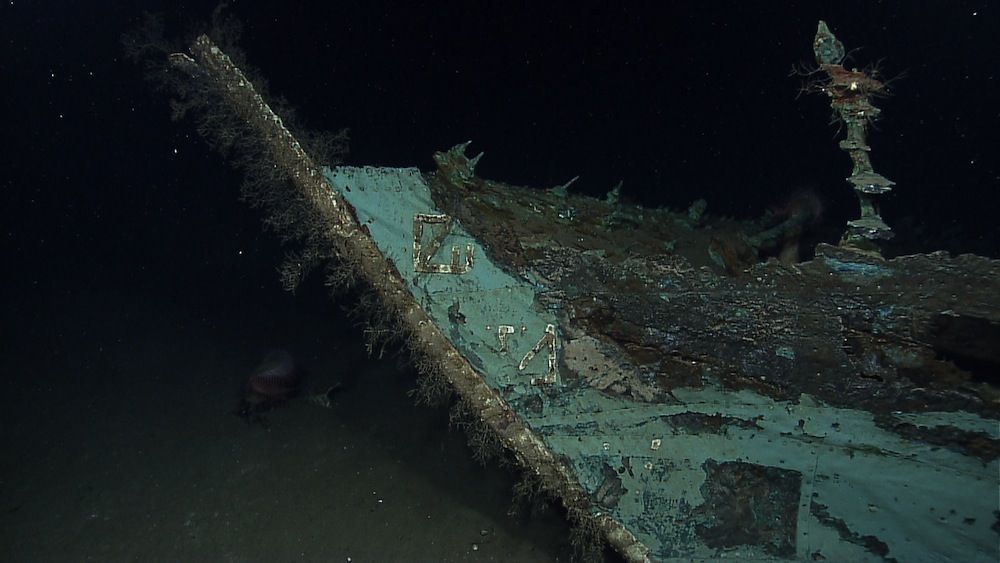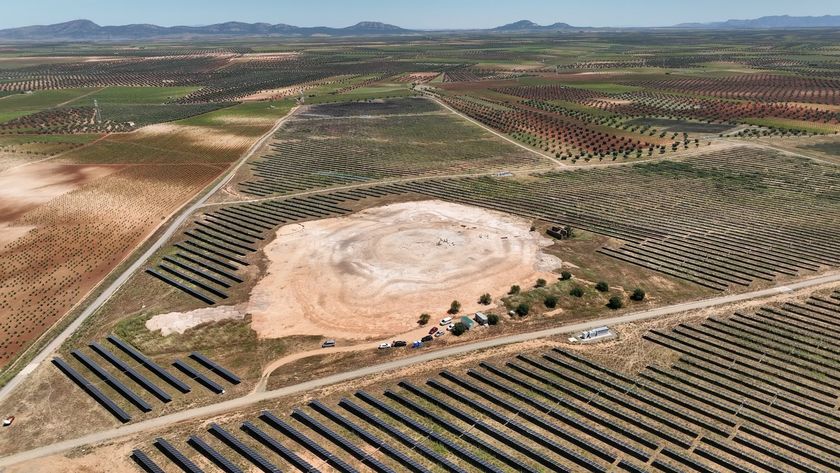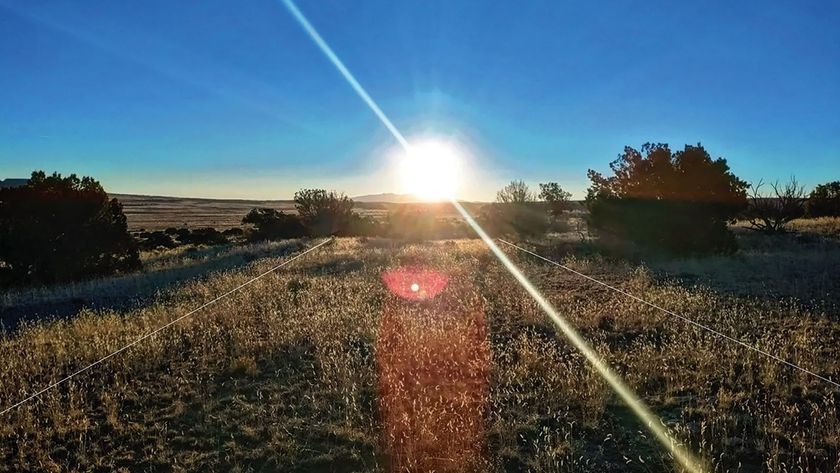
200-Year-Old Shipwreck Found in Gulf of Mexico

A newly discovered shipwreck in the Gulf of Mexico may have originally gone down 200 years ago. The ship is full of glass bottles, ceramic plates and boxes of muskets.
The shipwreck was discovered 200 miles (321 kilometers) off the Gulf Coast in more than 4,000 feet (1,219 meters) of water by a Gulf of Mexico mission led by the National Oceanic and Atmospheric Administration (NOAA). The wooden hull of the ship has nearly disintegrated, but a greenish copper shell that once protected the ship's wood remains behind.
"Artifacts in and around the wreck and the hull's copper sheathing may date the vessel to the early to mid-19th century," Jack Irion, a maritime archaeologist with the Bureau of Ocean Energy Management (BOEM), said in a statement.
The first hint of the shipwreck came in 2011, when a sonar survey by Shell Oil Company turned up an unknown blip on the seafloor. BOEM requested that NOAA explore such unknown blips during a recent expedition by the ship Okeanos Explorer. The ship returned April 29 from its 56-day mission exploring unknown areas of the Gulf. [See a gallery of expedition photos]
Along the way, the researchers imaged deep-sea corals near the Macondo well, the site of the 2010 Deepwater Horizon oil spill. They explored a thick forest of corals at the West Florida Escarpment, an undersea cliff. And they installed a device on Okeanos' remotely operated vehicle to measure the rate that gas rises in the water column.
The research team also explored four shipwrecks on the ocean bottom. One, explored on April 19, was first discovered in the 1980s, but has only been investigated by deep-sea archaeologists twice. This wooden-hulled ship dates between the mid-19th and early-20th centuries, though its story is currently a mystery. An exploration of another wreck, this one near the mouth of the Mississippi River, revealed that what was once thought to be a ship cannon was actually a bilge pump.
But the most scientifically interesting ship explored was the copper-plated wreck found 200 miles off the coast, according to Frank Cantelas, a NOAA maritime archaeologist. The ship was full of interesting artifacts, a remotely operated vehicle exploration revealed.
Sign up for the Live Science daily newsletter now
Get the world’s most fascinating discoveries delivered straight to your inbox.
"Some of the more datable objects include what appears to be a type of ceramic plate that was popular between 1800 and 1830, and a wide variety of glass bottles," said BOEM's Irion. "A rare ship's stove on the site is one of only a handful of surviving examples in the world and the second one found on a shipwreck in the Gulf of Mexico."
You can follow LiveScience senior writer Stephanie Pappas on Twitter @sipappas. Follow LiveScience for the latest in science news and discoveries on Twitter @livescience and on Facebook.

Stephanie Pappas is a contributing writer for Live Science, covering topics ranging from geoscience to archaeology to the human brain and behavior. She was previously a senior writer for Live Science but is now a freelancer based in Denver, Colorado, and regularly contributes to Scientific American and The Monitor, the monthly magazine of the American Psychological Association. Stephanie received a bachelor's degree in psychology from the University of South Carolina and a graduate certificate in science communication from the University of California, Santa Cruz.
Most Popular




